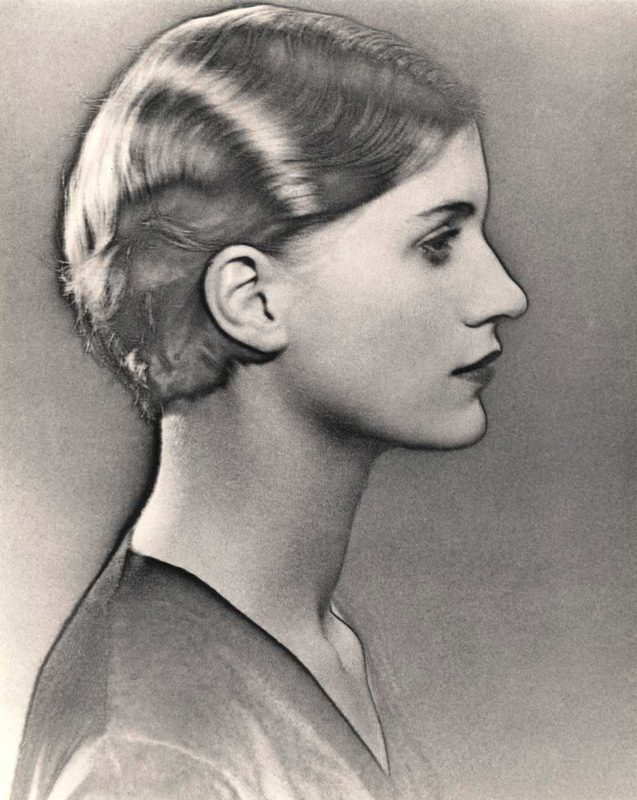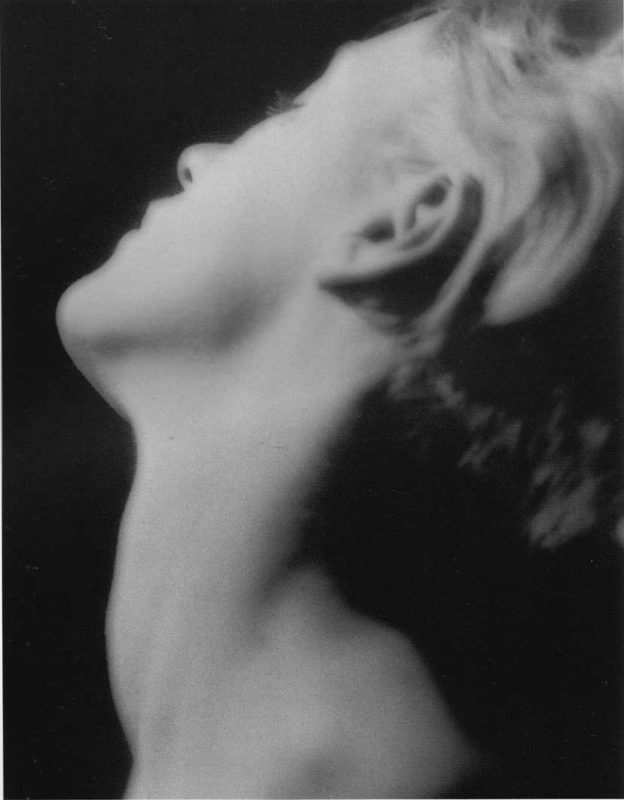
If anyone wants to create the next blockbuster biopic, they would have to look no further than at the life of Lee Miller. As a model in the 1920s, artist, photographer, war correspondent, and later a “Surrealist chef,” she was a woman who made her own rules; a rare find in her day and age. While her portraits by artist Man Ray remained popular, Miller only recently began to resurface as the talented and independent woman she was, all thanks to her son, Antony Penrose. Read on for an in-depth look at the life of the surrealist photographer and revolutionary Lee Miller.
Lee Miller’s Early Life
Lee Miller was introduced to photography by her father at an early age. She was always the subject of his work, often in a provocative and inappropriate way. Her father Theodore Miller had her pose nude since early childhood. Lee Miller’s only child, Antony, believes these activities contributed to many of her behaviors and practices later in life.

Lee Miller left home at 18 to study stage lighting and costume design in Paris. She returned to her hometown of Poughkeepsie, New York to join a drama program at Vassar College, but quickly moved to Manhattan. Here, she enrolled in the Art Students League of New York to study life drawing and painting but soon began a modeling career, purely by chance.
Modeling Years
Her modeling recruitment story seemed too good to be true. She was crossing a busy Manhattan street when she was nearly hit by a car. The potentially horrific accident was prevented by none other than Condé Nast, the elite entrepreneur whose publishing company owned Vogue. She then appeared in a Vogue cover and became known as the it-girl of the late 1920s.
But Miller’s modeling career was short-lived. She was a highly sought-after model from 1927-29 until one of her snapshots by groundbreaking photographer Edward Steichen was used in an advertisement for Kotex pads. Unfortunately, after that, she became an unsavory member of the fashion industry. In the 1920s, no one wanted to work with a model from a menstrual product ad.
A Surrealist Affair
Lee Miller left the modeling world and decided to return to her passion: art. Miller moved to Paris and soon became obsessed with the idea of becoming the apprentice of renowned surrealist painter and photographer Man Ray. The quirky artist was known for not taking any students, but Miller wormed her way into his studio and his heart. She also opened her own studio in Paris in 1929, where she worked as a fashion photographer, portraitist and surrealist artist.

Lee Miller became Man Ray’s lover, muse, and collaborator. Together, they took thousands of photographs, often of each other, and discovered the modern version of solarization. Solarization occurs when a partially developed photograph is quickly exposed to light. The solarized photos that the pair took are some of their most famous, and the technique became widely acknowledged and mimicked by other surrealists.
Other Surrealist Techniques
Other techniques that Lee Miller adopted included drastically cropping and tilting photographs to put a suggestive and unsettling focus on parts of the naked human body, often her own body. Miller and Man Ray showed the human body in a way that seems relatively normal today, but in the 1920s, these techniques were revolutionary. No one had thought of flipping, rotating or cropping typical portraits to make them look odd and distorted. One of the most famous of these is Neck (1930), in which Miller took a discarded negative that Man Ray had taken of her own neck, cropped it closely just above her shoulders, and created a much more erotic image than was originally intended.
Not only did she embrace the literal artistic form of Surrealism, but Miller also aligned with philosophical Surrealism. She was a woman who lived her life free from the constraints of traditional society, religion, or the law. She cavorted with other surrealist artists like Pablo Picasso and Jean Cocteau, who she remained friends with their whole lives. In that way, she was not only the muse of Man Ray but the muse of the surrealist movement, just as the movement itself was her muse.
Pursuing Solo Endeavors
Lee Miller and Man Ray’s tumultuous relationship ended in 1932, and she returned to New York City. Alongside her brother as the darkroom operator, Miller opened the Lee Miller Studio, doing editorial and marketing work for popular brands like Elizabeth Arden and Saks Fifth Avenue. Her work was also included in exhibitions at popular galleries, although she did not exhibit as much as her surrealist contemporaries. In 1933, she had her first and only solo exhibition organized by Julian Levy.
Get the latest articles delivered to your inbox
Sign up to our Free Weekly NewsletterHer time owning and operating a studio was short, as she soon met and married Egyptian businessman Aziz Eloui Bey in 1934. She moved with him to Egypt and captured moments along the way. This is when her photographic style began to shift from portraits and editorial work to surrealist landscapes and artistic street photography.

The Portrait of Space (1937) is one of her most renowned photos from this time period, and it even inspired painter René Magritte to create Le Baiser. Miller occupied her time taking photos of busy streets in Cairo, of shadows casting over Egyptian monasteries, and of celebrity friends skiing down sand dunes. But she soon felt like she had seen everything she wanted to see in Egypt and was bored in her marriage with Eloui Bey. She returned to Paris where she met her second husband Roland Penrose. She continued to take surrealist photographs and had her work featured in multiple exhibitions in New York and London from 1937 to 1941.
From Artist To War Correspondent
When the war broke out, Lee Miller’s friends and family begged her to return to the US from where she was living in Hampstead, London. She became a freelance fashion photographer for Vogue and refused to return home. Eventually, she became an official war correspondent. The government wanted publications like Vogue to help everyday women understand what they contribute to the war effort. Miller did many photo series’ on women who helped with the war effort in various ways.
Miller eventually began reporting overseas. She first was sent to Normandy and was one of only four female photographers accredited with the US armed forces. She was the only photojournalist, male or female, at St Malo in 1944, when Americans successfully took the port from Germany. She then continued to move through France with Allied forces, capturing all of the tolls of war on the country and its people along the way.
Her most notable work while overseas was at the concentration camps of Dachau and Buchenwald. She photographed the gruesome aftermath of the Holocaust just as thousands of people were free to finally walk out of the concentration camp gates. The scenes she captured here left a long-lasting impression on her and potentially contributed to her depression and alcoholism later in life.
A truly liberating moment for Miller was her experience at Hitler’s apartment in Munich. Just hours after the prisoners of Dachau had been freed, and the same day that Hitler committed suicide, Miller and her fellow correspondent and lover David E. Sherman wandered through his abandoned apartment in Munich. Sherman took many iconic photos of Miller celebrating their victory that day, like the one above of Miller bathing in Hitler’s bathtub, purposefully dumping her muddy boots on the bathmat.
Miller melded her past artistic experience with her journalistic work at this time for the sake of historical documentation. It became her goal to show people back in the US the atrocities of war, and she used her skills to frame photos and evoke raw emotion from her subjects and the viewers back home. She urged the editors of British Vogue to publish her photos of concentration camps and other war tragedies as they truly were, regardless of how it would look in a fashion magazine.
Lee Miller’s Life And The Aftermath of War
Lee Miller returned to Britain to live with Roland Penrose. After coming home, she suffered from terrible depression, alcoholism and PTSD, as many other soldiers did. She discovered she was pregnant, and Antony Penrose was born in 1947. The family bought a farmhouse in Chiddingly, East Sussex, and Miller slowly faded away from photography in favor of gourmet cooking.

Their farmhouse became a getaway for their surrealist friends, such as Max Ernst, Man Ray, and Pablo Picasso. Miller cooked them unique meals, dyed her food crazy colors, and also specialized in historically accurate cooking. She continued to take occasional photographs for her husband’s biographies, but never returned fully to photography.
Miller passed away from cancer, never telling her only child of her career beyond her time spent in Paris with Man Ray. The two didn’t have a very stable relationship, as Miller was coping with her mental illnesses and having a hard time handling her open relationship with her husband. Some speculate that her death was expedited by Roland Penrose’s affair with famous trapeze artist Diane Deriaz. Antony Penrose discovered thousands of negatives and prints in the farmhouse attic after her death and realized just how much turmoil and she went through and the dedication she had. He has continued to publish and preserve her work, and grow her legacy, ever since, which you can find at https://www.leemiller.co.uk/.








